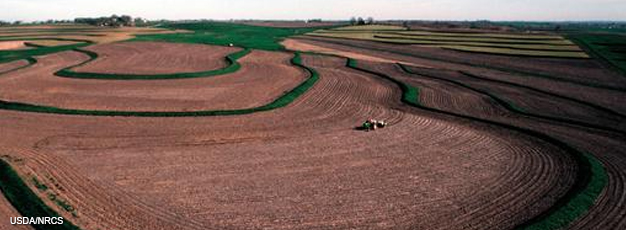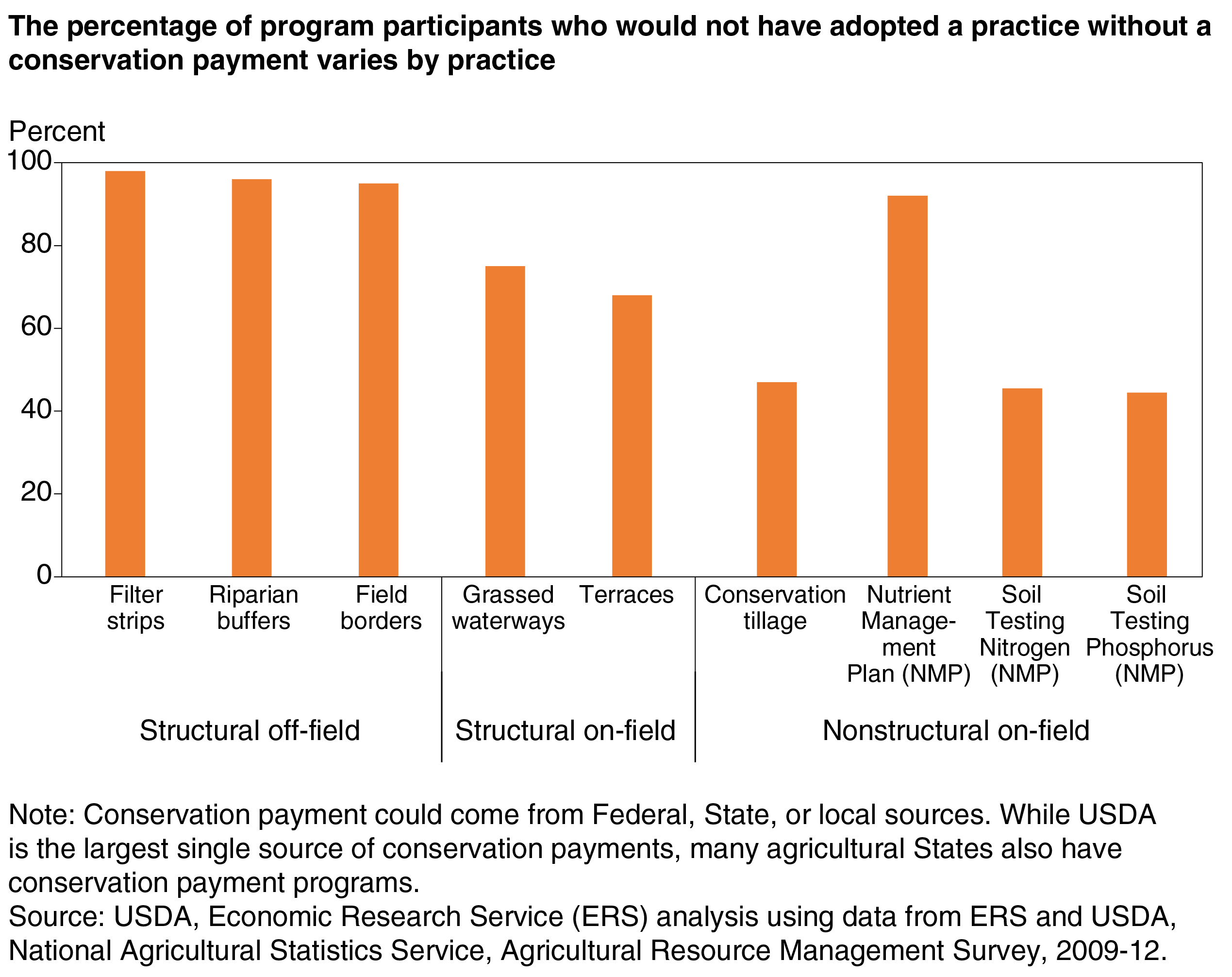
The Effect of Conservation Payments on Farmer Adoption Varies Across Conservation Practices
- by Roger Claassen and David Smith
- 5/7/2018
USDA conservation programs provide financial and technical assistance to help farmers conserve agricultural resources and improve environmental quality. A wide range of practices can be supported, including conservation tillage, terraces, and various nutrient management plans. Support for conservation practices also comes from State and local governments to help address conservation and resource concerns.
Conservation practices supported by conservation program payments deliver “additional” conservation or environmental improvement if the practice would not have been adopted without the payment. Therefore, “additionality” is a key measure of a conservation program’s performance. Financial assistance to non-additional practices uses limited conservation program resources without producing conservation or environmental gain.
Sometimes, farmers adopt conservation practices without assistance from a conservation program. Conservation practices provide benefits to society at large (through improved environmental quality) and to the farmers themselves. Conservation tillage, for example, reduces labor and fuel costs—and may be profitable for some farmers if crop yields can be maintained or improved. Conservation tillage can also help improve water quality by reducing the loss of sediment and nutrients. To the extent that conservation practices are profitable, government support is not needed to encourage their adoption. Because the profitability of conservation practices can vary across farms, however, it is not always clear whether financial assistance for a practice will result in additional conservation on that farm.
ERS research shows that payments leverage additional conservation, but the extent of additionality varies widely across conservation practices. Using data from 2009 to 2012, an ERS study estimated that more than 90 percent of producers who received payments for “structural off-field” practices (such as field borders and filter strips) would not have adopted the practices without a payment. Since these practices largely focus on keeping nutrients and sediments from leaving the farm, the farmers themselves receive little direct economic benefit.
In contrast, conservation tillage has relatively low additionality. Results indicate that about half of farmers who received payments for conservation tillage would have adopted it, even without the payment. Conservation tillage can have significant onfarm economic benefits for some farmers. These benefits depend significantly on climate, soil, and topography. Therefore, they vary across farms.
This article is drawn from:
- Claassen, R. and E. Duquette, and D. Smith, “Additionality in U.S. Agricultural Conservation Programs,” Land Economics, 94(1):19-35.. (2018).
You may also like:
- Claassen, R., Horowitz, J., Duquette, E. & Ueda, K. (2014). Additionality in U.S. Agricultural Conservation and Regulatory Offset Programs. U.S. Department of Agriculture, Economic Research Service. ERR-170.


